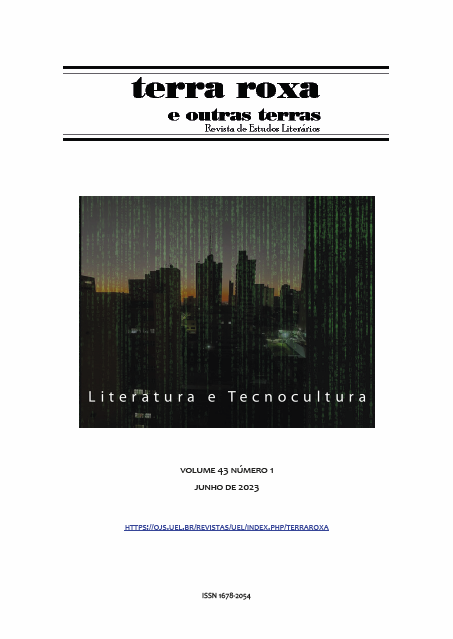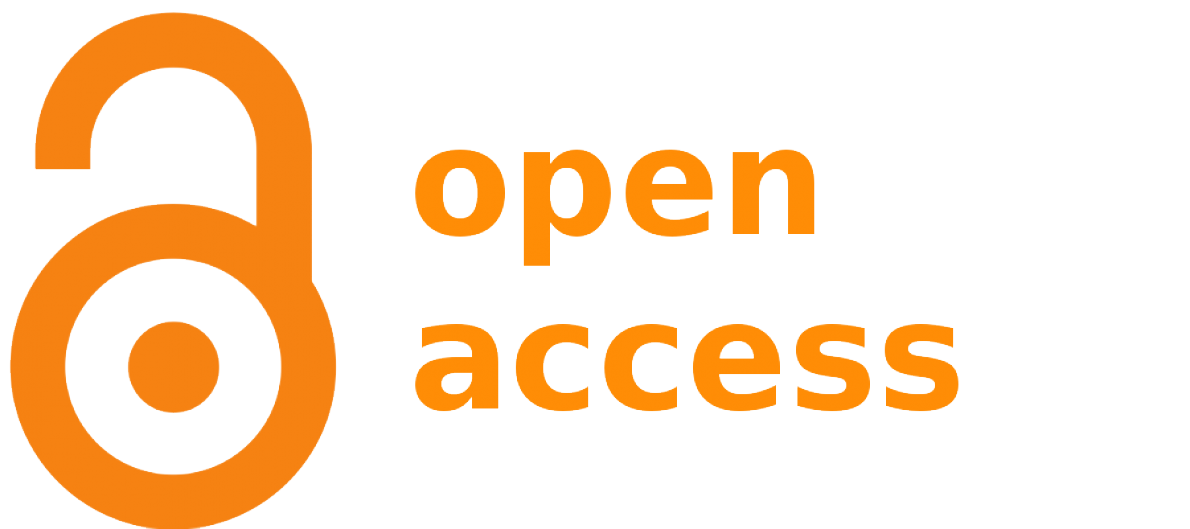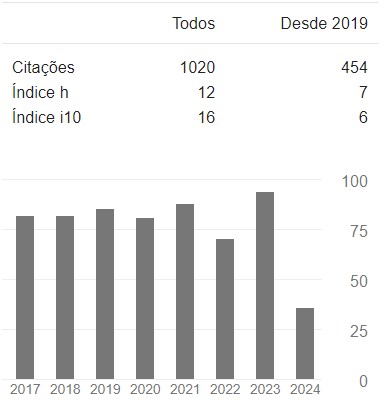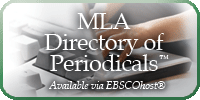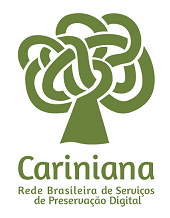Transliteracy: expanded materialities of contemporary literature in the context of technoculture
DOI:
https://doi.org/10.5433/1678-2054.2023vol43n1p23Keywords:
intermediality, transliteracy, expanded materiality, contemporary literatureAbstract
After much was said about the apocalypse of the book and of literature as paradigms of culture at the edge of 2000, we have confirmed that printed literature did not die or completely move to the digital world, but rather has received feedback from it and from its dynamics and has renewed its modes of production based on the tension between the dematerialization imposed by virtuality and a return to materiality, expanded into innumerable possibilities and with a constant impetus for renewal. Thus, in the context of technoculture, literature has renewed and diversified its modes of production in contact with other media spheres, it has received feedback from technology and has expanded its processes, on the one hand, to carve out a place in the digital context and, on the other, to enhance and expand the materiality behind the experience of digitality, which we see crystallized in the rise of independent publishers, the constant production of artist's books and intermedial works, the incorporation of topics and processes from contemporary art and the consolidation of a “network literature” that draws from the digital universe. I am interested in dwelling on how the concept of literacy has been modified in light of this and how, in contemporary literature, the practices of writing and reading from one medium are transferred to another, generating a condition of transliteracy, in which I will dwell through some examples.
Downloads
References
AGAMBEN, Giorgio. ¿Qué es un dispositivo? seguido de El amigo y de La Iglesia y el Reino, Trad. Mercedes Ruvituso. Barcelona: Anagrama, 2015.
BOLTER, Jay David & Richard Grusin. Remediation: Understanding New Media. Cambridge: MIT Press, 2000.
BREA, José Luis. La era postmedia: Acción comunicativa, prácticas (post) artísticas y dispositivos neomediales. Barcelona: Consorcio Salamanca, 2002.
Caja de té. Breves poemas japoneses. México: La Dïéresis, 2015.
COPE, Bill & Mary Kalantzis, eds. Multiliteracies. Literacy Learning and the Design of Social Futures. London: Routledge, 2000.
DOLOUGHAN, Fiona. Contemporary Narrative.TextualProduction, Multimodality and Multiliteracies. London: Continuum, 2011.
ECO, Umberto. La obra abierta. Madrid: Planeta-Agostini, 1984 [1962].
FERRIS, Emil. My Favorite Thing is Monsters. Seattle: Fantagraphics, 2017.
GAINZA, María. El nervio óptico. Barcelona: Anagrama, 2017.
GARRUAMUÑO, Florencia. Mundos en común. Ensayos sobre la inespecificidad en el arte. Buenos Aires: FCE, 2015.
GIOVINE, María Andrea. El giro iconotextual en las letras mexicanas recientes (1960-2020). Apuntes para una historiografía. Philologia Hispalensis, Sevilla, vol. 35, n. 2, p. 111-127, 2021. Disponible en: https://doi.org/10.12795/PH.2021.v35.i02.07. DOI: https://doi.org/10.12795/PH.2021.v35.i02.07
JENKINS, Henry. Transmedia Storytelling 101, 2007 & Transmedia Storytelling 202, 2011. Further Reflections. Disponibles en: http://henryjenkins.org/blog/2007/03/transmedia_storytelling_101.html, 2007 & http://henryjenkins.org/blog/2011/08/defining_transmedia_further_re.html, 2011.
LIU, Alan. Research in the Technological, Social, and Cultural Practices of Online Reading. Transliteracies Project. 2005. Disponible en: https://liu.english.ucsb.edu/transliteracies-research-in-the-technological-social-and-cultural-practices-of-online-reading/.
LUDMER, Josefina. Literaturas postautónomas. Ciberletras. Revista de crítica literaria y de cultura, New York, n. 17, julio de 2007. Disponible en: https://www.lehman.cuny.edu/ciberletras/documents/ISSUE17.pdf.
SELBER, Suart. Multiliteracies for a digital age. Illinois: Southern Illinois U P, 2004.
SPERANZA, Graciela. Cronografías. Arte y ficciones de un tiempo sin tiempo. Barcelona: Anagrama, 2017.
POSADA, Adolfo R. La literatura después de la literatura: teoría y crítica del arte verbal postliterario en el siglo XXI. Revista Letral, Granada, n. 24, 2020, p. 76-99, 2020. Disponible en: https://doi.org/10.30827/rl.v0i24.8678. DOI: https://doi.org/10.30827/rl.v0i24.8678
VILLANUEVA, Darío. Canon y post-literatura. Domingo Sánchez-Mesa, José Manuel Ruiz Martínez & Azucena González Blanco, orgs. Teoría y comparatismo: tradición y nuevos espacios: Actas del I Congreso Internacional de ASETEL. Granada: Editorial Universidad de Granada, 2014. 87-108. Disponible en: https://pt.scribd.com/document/372388642/Congreso-ASETEL-Importante-139#
YEHYA, Naief. Tecnocultura: el espacio íntimo transformado en tiempos de paz y guerra. Ciudad de México: Tusquets, 2008.
Downloads
Published
How to Cite
Issue
Section
License
Copyright (c) 2023 Maria Andrea Giovine Yáñez

This work is licensed under a Creative Commons Attribution 4.0 International License.
Authors who publish in this journal agree to the following terms:
a) The authors retain the copyright and grant the journal the right of first publication, the work being simultaneously licensed under the Creative Commons Attribution-NonCommercial 4.0 International License, allowing the sharing of the work with acknowledgment of the authorship of the work and initial publication in this journal.
b) Authors are authorized to assume additional contracts separately, for non-exclusive distribution of the version of the work published in this journal (eg, publish in an institutional repository or as a book chapter), with acknowledgment of authorship and initial publication in this journal.
c) Authors are allowed and encouraged to publish and distribute their work online (e.g. in institutional repositories or on their personal page) after the editorial process, as this can generate productive changes as well as increase impact and citation of the published work (See The Effect of Open Access).
d) The authors of the approved works authorize the journal to, after publication, transfer their content for reproduction in content indexers, virtual libraries and the like.
e) The authors assume that the texts submitted for publication are of their original creation, taking full responsibility for their content in case of any objection by third parties.
